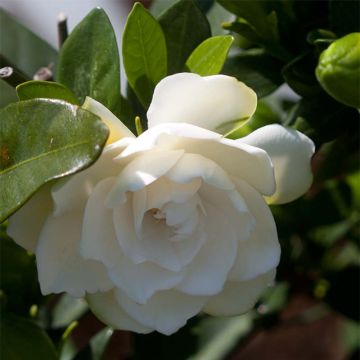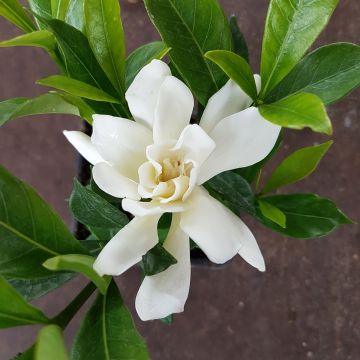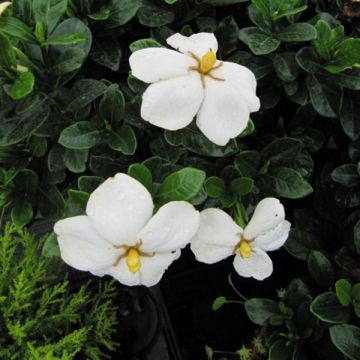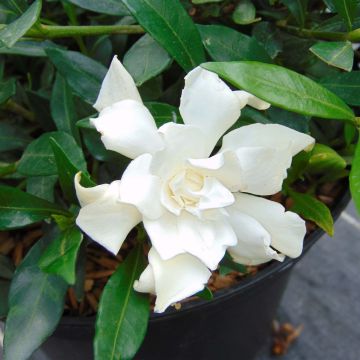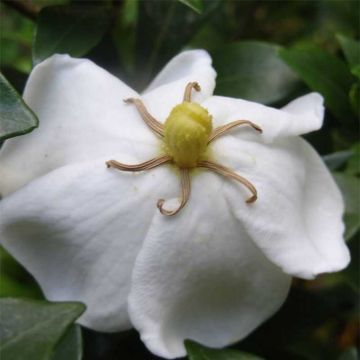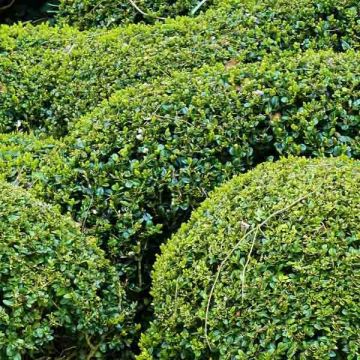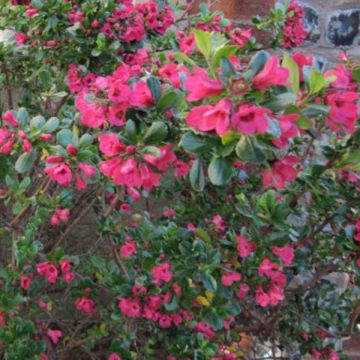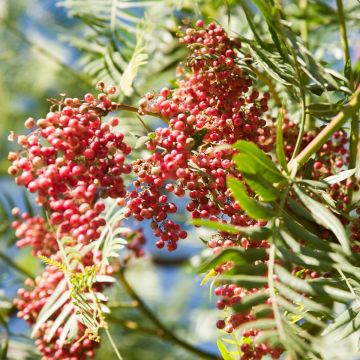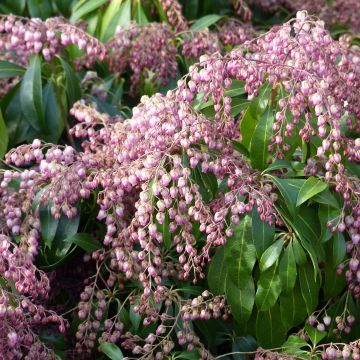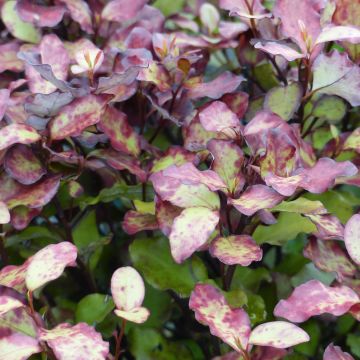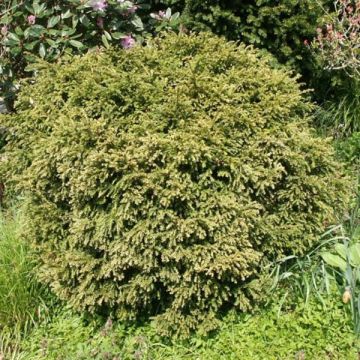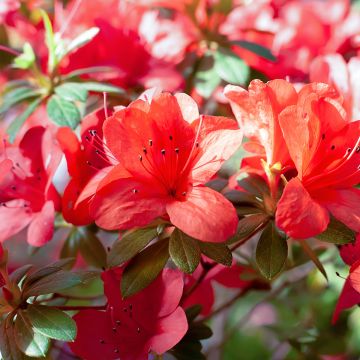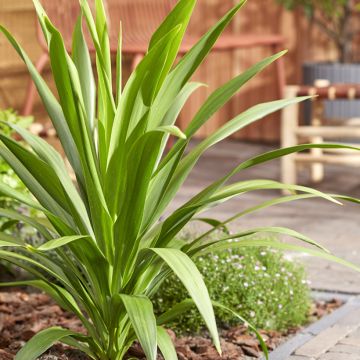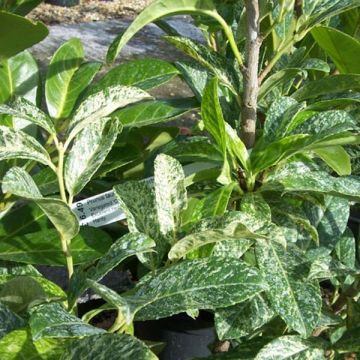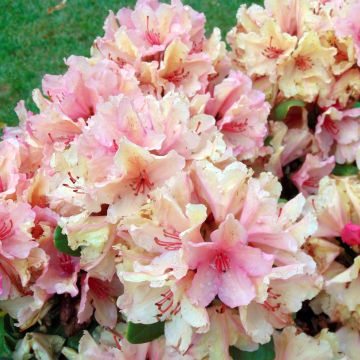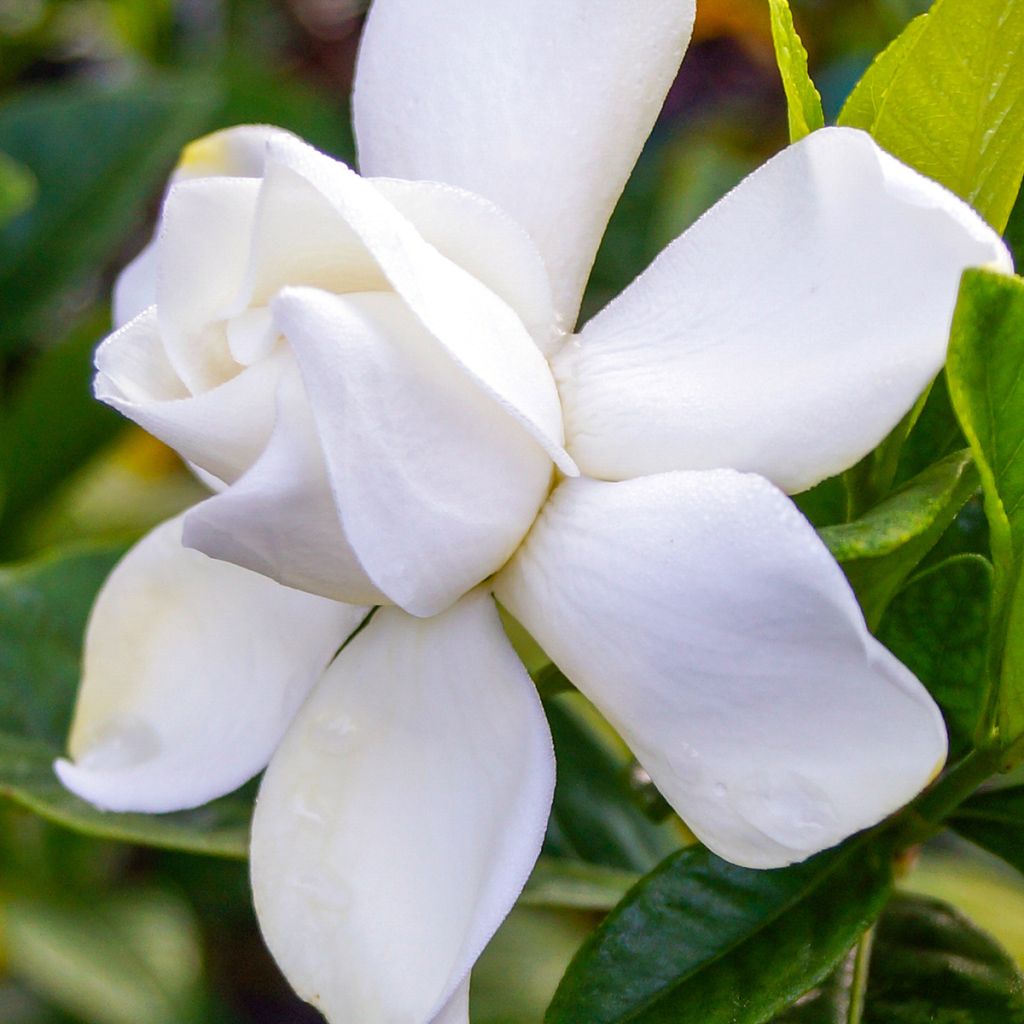

Gardenia jasminoides Summer Snow
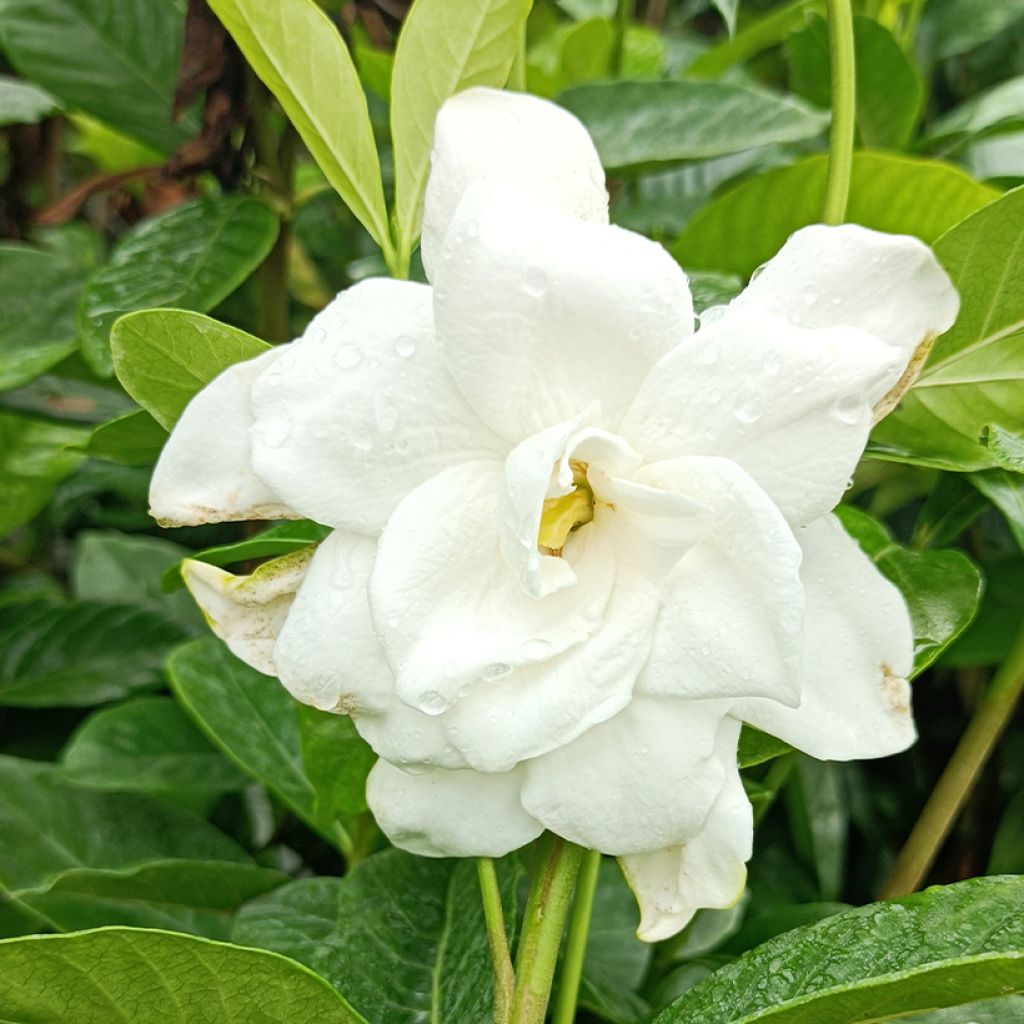

Gardenia jasminoides Summer Snow
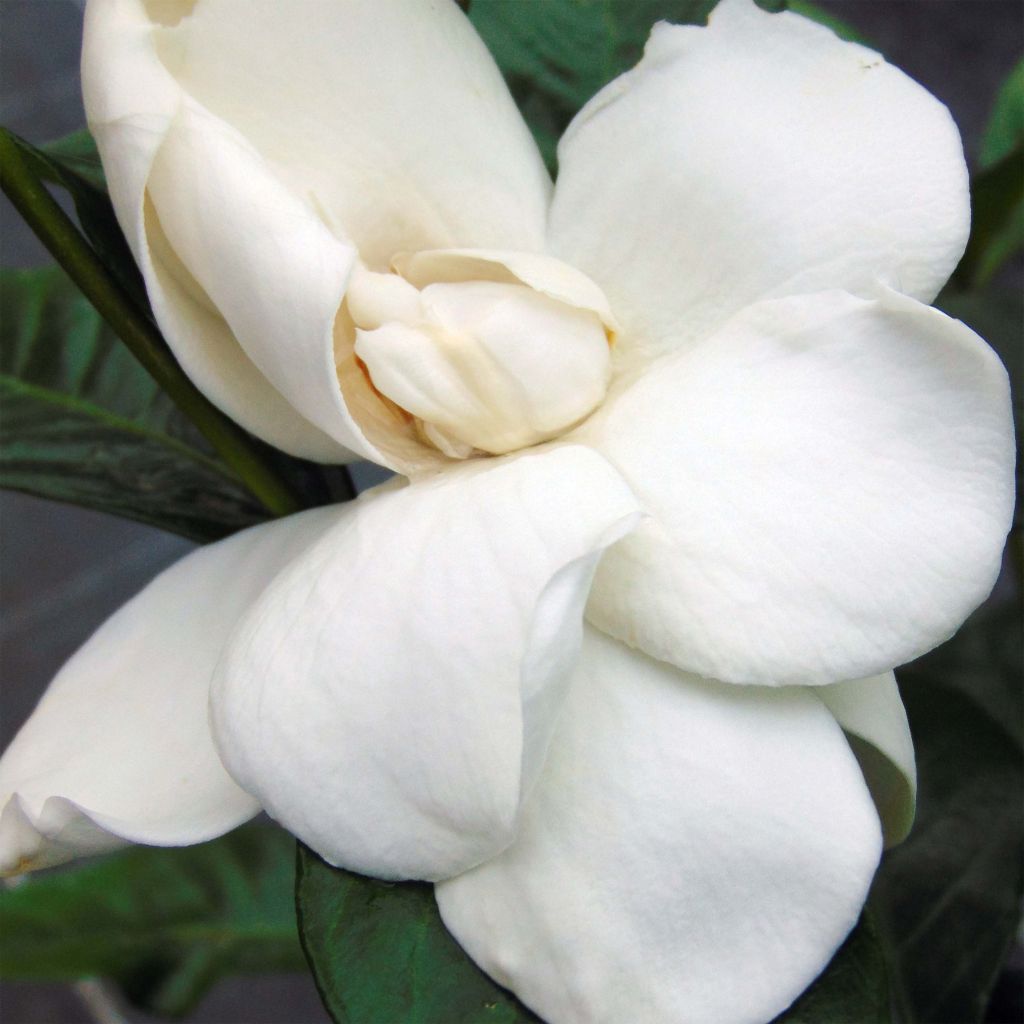

Gardenia jasminoides Summer Snow
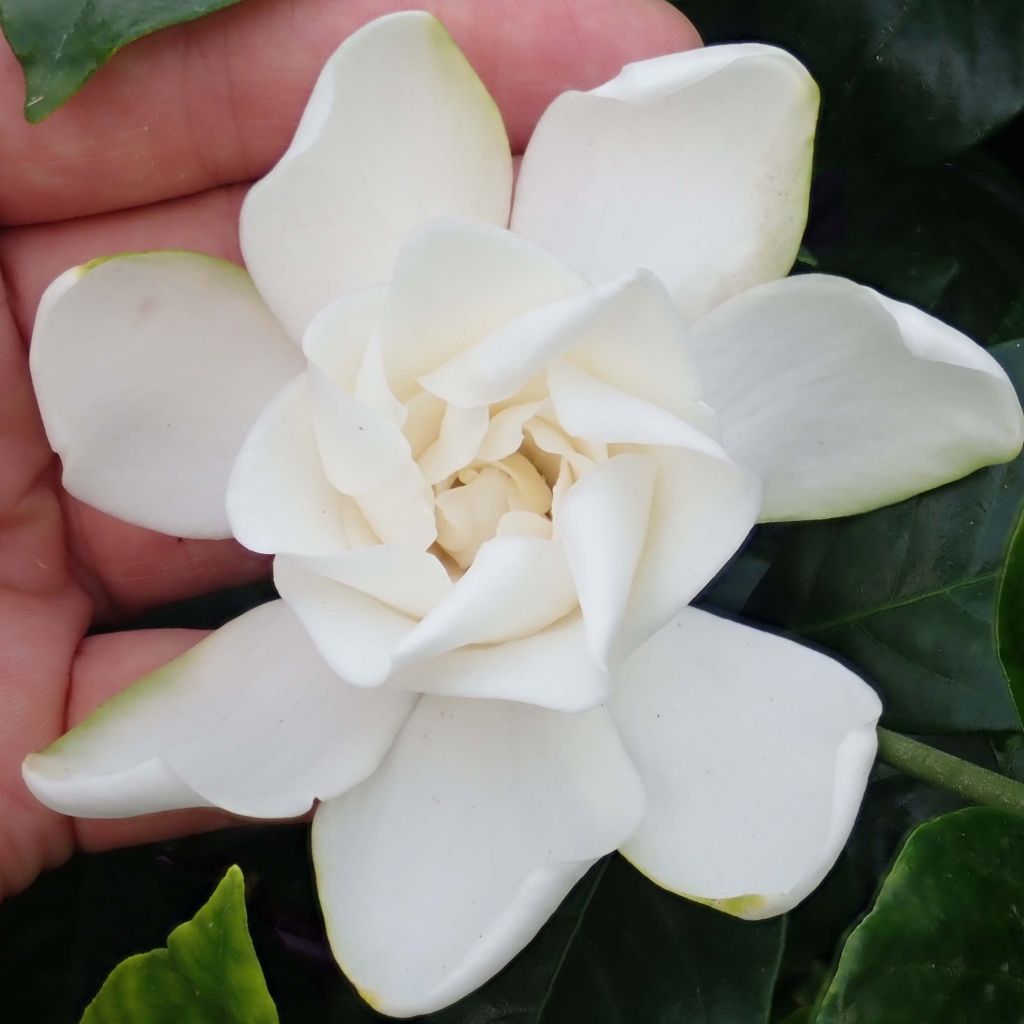

Gardenia jasminoides Summer Snow
Gardenia jasminoides Summer Snow
Gardenia jasminoides Summer Snow
Cape Jasmine, Common Gardenia
This item cannot be shipped to the selected country
Delivery charge from €5.90
More information
Schedule delivery date,
and select date in basket
This plant carries a 24 months recovery warranty
More information
We guarantee the quality of our plants for a full growing cycle, and will replace at our expense any plant that fails to recover under normal climatic and planting conditions.
From €5.90 for pickup delivery and €6.90 for home delivery
Express home delivery from €8.90.
Does this plant fit my garden?
Set up your Plantfit profile →
Description
Gardenia jasminoides Summer Snow, the result of 10 years of research in the U.S.A, is the largest and most exciting of hardy gardenias! This fantastic shrub, which combines multiple qualities, is suitable for cultivation in the ground in many regions, but exclusively in slightly acidic soil. This vigorous variety shows rapid growth, better resistance to air and soil drought, produces large evergreen leaves, and beautiful, semi-double, extremely fragrant flowers in summer. It is an exceptional plant that deserves a prominent place in a large pot on the terrace or close to the house, under a window or near the entrance.
Gardenia jasminoides is a shrub from the Rubiaceae family, native to Asia. It is frequently found in Vietnam, southern China, Taiwan, Japan, and India, in mild and humid, subtropical to tropical climates. Its cultivation in China dates back at least a thousand years, and in recent years numerous American cultivars of varying hardiness have been produced.
'Summer Snow', from which it originates, stands out for its vigour, cold resistance, and better tolerance to air and soil drought. It quickly forms a very beautiful shrub with a bushy, flexible, and slightly spreading habit, reaching 1 m (3 ft 4 in) all around in pots, 1.20 m (3 ft 11 in) in the ground under suitable conditions. Its branches are quite flexible. Its large, waxy-textured, semi-double white flowers sometimes reach 8 cm (3.1 in) in diameter. Their scent is powerful, delightfully intoxicating, addictive. They bloom in May-June, earlier or later depending on the climate. They are less numerous than those of other hardy gardenias. They appear solitarily at the axils of the leaves, at the top of the branches, measuring 5 to 8 cm (2 to 3.1 in) in diameter and composed of cream-white petals that fade to pale yellow. The flowers stand out well against the shiny dark green leaves, which are larger than those of usual varieties. They are entire, thick, leathery, with very prominent veins. Its bark is grayish. Gardenia have a very long lifespan and are more floriferous in their young age.
Despite their somewhat demanding nature, Gardenias are among the most coveted shrubs by plant enthusiasts. It is undeniable that when the conditions are met, the gardenia proves to be one of the most beautiful plant species. However, the hardiness of certain varieties like Summer Snow, which has been proven in the ground up to the Paris region, represents a horticultural research achievement. It should of course be moderated depending on the duration of frosts, exposure to dry and cold winds, and soil moisture content. It is possible to successfully cultivate the Summer Snow gardenia in the ground, in a sheltered location and in non-limestone soil. It also grows very well in pots, where it will withstand moderately harsh winters without damage. It is often advisable, outside of privileged regions, to store it in a cold greenhouse during winter as a precaution. In the garden, camellias, rhododendrons, pieris, and kalmias will make excellent companions for this wonderful shrub.
Report an error about the product description
Gardenia jasminoides Summer Snow in pictures
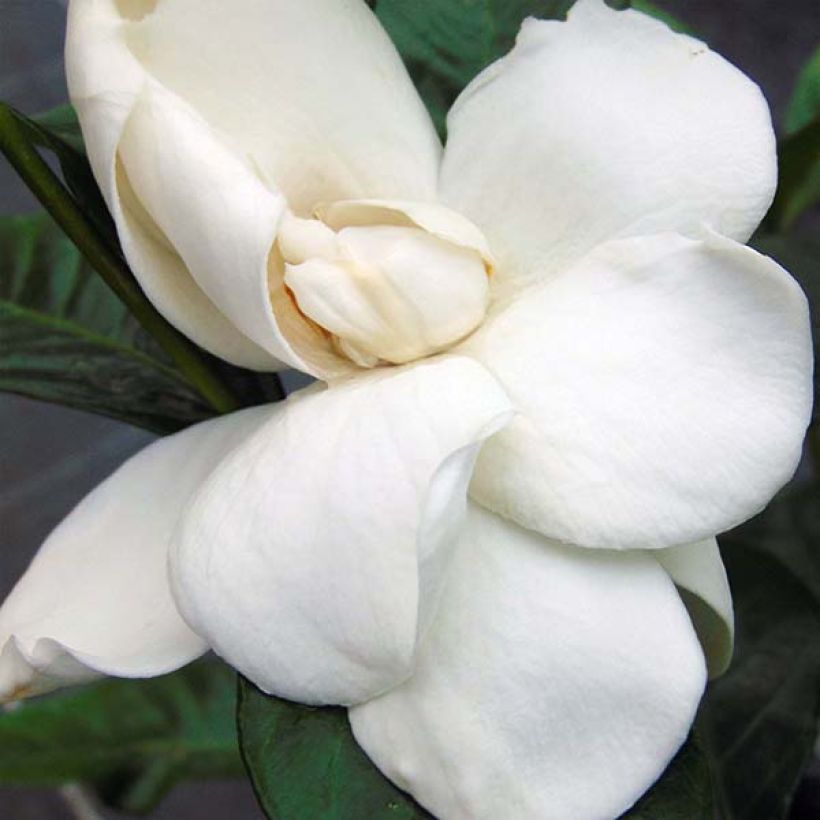

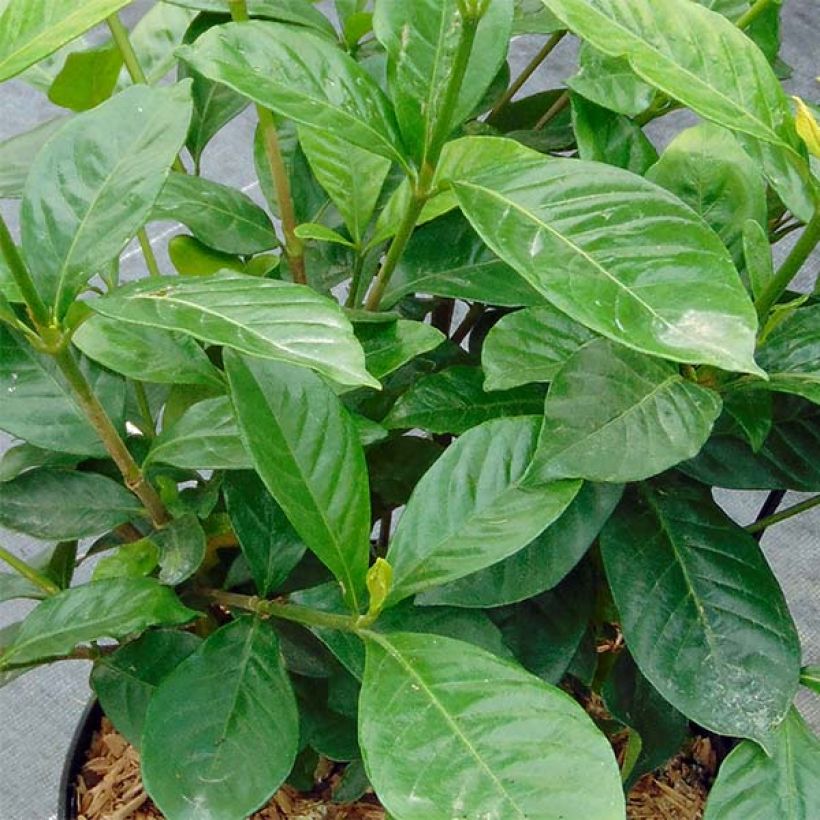

Plant habit
Flowering
Foliage
Botanical data
Gardenia
jasminoides
Summer Snow
Rubiaceae
Cape Jasmine, Common Gardenia
Cultivar or hybrid
Other Gardenia
Planting and care
Plant Gardenia jasminoides Summer Snow in a partially shaded bed or in a spot exposed to the morning sun, sheltered from the hottest rays of the sun. Exposure is important, as the Gardenia loves warmth (but much less dry soil and air) and the harsh rays of the sun can scorch its foliage and flower buds. To improve its hardiness by a few degrees, plant it in a sheltered location away from cold, dry winds, and make sure there is no stagnant moisture at its base in winter. On the other hand, it will need a good supply of non-calcareous water, preferably in summer, during its establishment period. Therefore, choose a well-draining, humus-rich substrate, for example a mixture of compost and friable garden soil, lightened with non-calcareous sand, coarse gravel or clay pebbles. Whether you are in an area with mild winters or not, it is wiser to protect container-grown plants in an unheated conservatory or a cold greenhouse. The Gardenia also requires regular fertilisation: use a specific fertiliser for acid-loving shrubs.
Planting period
Intended location
Care
-
, onOrder confirmed
Reply from on Promesse de fleurs
Evergreen shrubs
Haven't found what you were looking for?
Hardiness is the lowest winter temperature a plant can endure without suffering serious damage or even dying. However, hardiness is affected by location (a sheltered area, such as a patio), protection (winter cover) and soil type (hardiness is improved by well-drained soil).

Photo Sharing Terms & Conditions
In order to encourage gardeners to interact and share their experiences, Promesse de fleurs offers various media enabling content to be uploaded onto its Site - in particular via the ‘Photo sharing’ module.
The User agrees to refrain from:
- Posting any content that is illegal, prejudicial, insulting, racist, inciteful to hatred, revisionist, contrary to public decency, that infringes on privacy or on the privacy rights of third parties, in particular the publicity rights of persons and goods, intellectual property rights, or the right to privacy.
- Submitting content on behalf of a third party;
- Impersonate the identity of a third party and/or publish any personal information about a third party;
In general, the User undertakes to refrain from any unethical behaviour.
All Content (in particular text, comments, files, images, photos, videos, creative works, etc.), which may be subject to property or intellectual property rights, image or other private rights, shall remain the property of the User, subject to the limited rights granted by the terms of the licence granted by Promesse de fleurs as stated below. Users are at liberty to publish or not to publish such Content on the Site, notably via the ‘Photo Sharing’ facility, and accept that this Content shall be made public and freely accessible, notably on the Internet.
Users further acknowledge, undertake to have ,and guarantee that they hold all necessary rights and permissions to publish such material on the Site, in particular with regard to the legislation in force pertaining to any privacy, property, intellectual property, image, or contractual rights, or rights of any other nature. By publishing such Content on the Site, Users acknowledge accepting full liability as publishers of the Content within the meaning of the law, and grant Promesse de fleurs, free of charge, an inclusive, worldwide licence for the said Content for the entire duration of its publication, including all reproduction, representation, up/downloading, displaying, performing, transmission, and storage rights.
Users also grant permission for their name to be linked to the Content and accept that this link may not always be made available.
By engaging in posting material, Users consent to their Content becoming automatically accessible on the Internet, in particular on other sites and/or blogs and/or web pages of the Promesse de fleurs site, including in particular social pages and the Promesse de fleurs catalogue.
Users may secure the removal of entrusted content free of charge by issuing a simple request via our contact form.
The flowering period indicated on our website applies to countries and regions located in USDA zone 8 (France, the United Kingdom, Ireland, the Netherlands, etc.)
It will vary according to where you live:
- In zones 9 to 10 (Italy, Spain, Greece, etc.), flowering will occur about 2 to 4 weeks earlier.
- In zones 6 to 7 (Germany, Poland, Slovenia, and lower mountainous regions), flowering will be delayed by 2 to 3 weeks.
- In zone 5 (Central Europe, Scandinavia), blooming will be delayed by 3 to 5 weeks.
In temperate climates, pruning of spring-flowering shrubs (forsythia, spireas, etc.) should be done just after flowering.
Pruning of summer-flowering shrubs (Indian Lilac, Perovskia, etc.) can be done in winter or spring.
In cold regions as well as with frost-sensitive plants, avoid pruning too early when severe frosts may still occur.
The planting period indicated on our website applies to countries and regions located in USDA zone 8 (France, United Kingdom, Ireland, Netherlands).
It will vary according to where you live:
- In Mediterranean zones (Marseille, Madrid, Milan, etc.), autumn and winter are the best planting periods.
- In continental zones (Strasbourg, Munich, Vienna, etc.), delay planting by 2 to 3 weeks in spring and bring it forward by 2 to 4 weeks in autumn.
- In mountainous regions (the Alps, Pyrenees, Carpathians, etc.), it is best to plant in late spring (May-June) or late summer (August-September).
The harvesting period indicated on our website applies to countries and regions in USDA zone 8 (France, England, Ireland, the Netherlands).
In colder areas (Scandinavia, Poland, Austria...) fruit and vegetable harvests are likely to be delayed by 3-4 weeks.
In warmer areas (Italy, Spain, Greece, etc.), harvesting will probably take place earlier, depending on weather conditions.
The sowing periods indicated on our website apply to countries and regions within USDA Zone 8 (France, UK, Ireland, Netherlands).
In colder areas (Scandinavia, Poland, Austria...), delay any outdoor sowing by 3-4 weeks, or sow under glass.
In warmer climes (Italy, Spain, Greece, etc.), bring outdoor sowing forward by a few weeks.

































